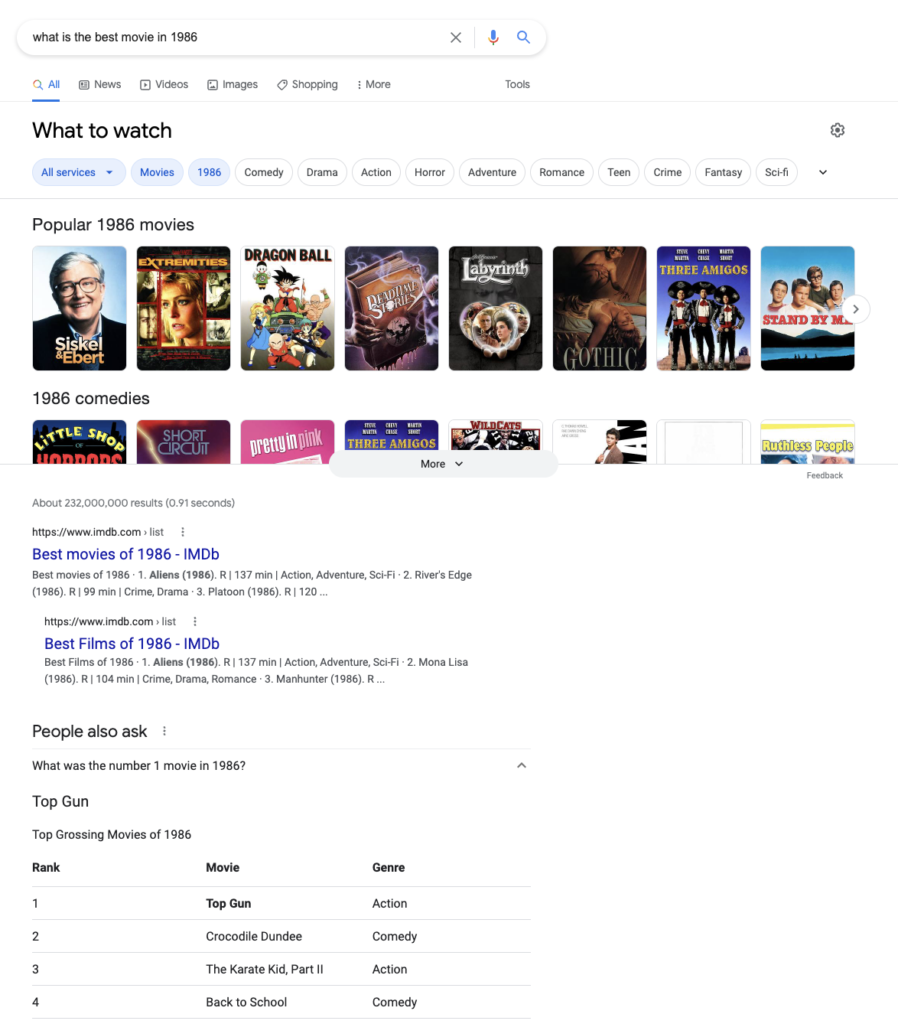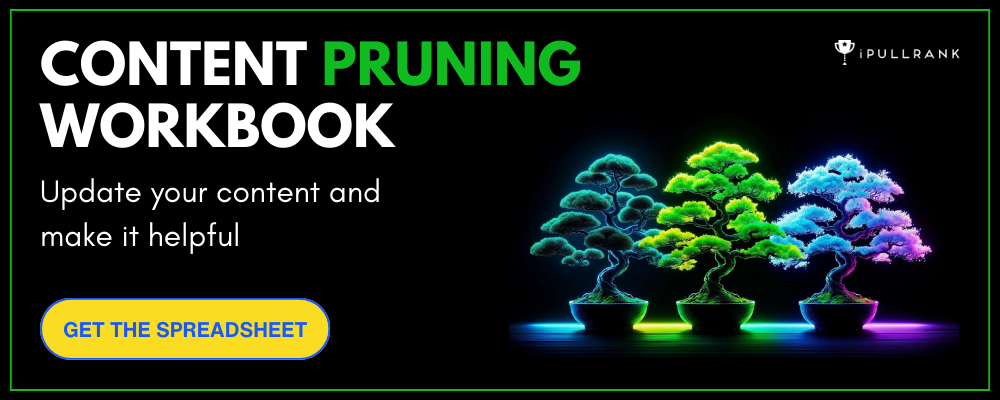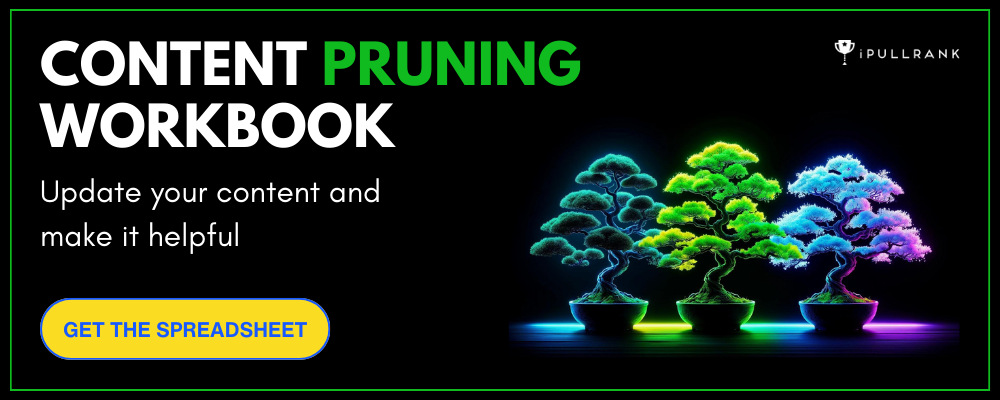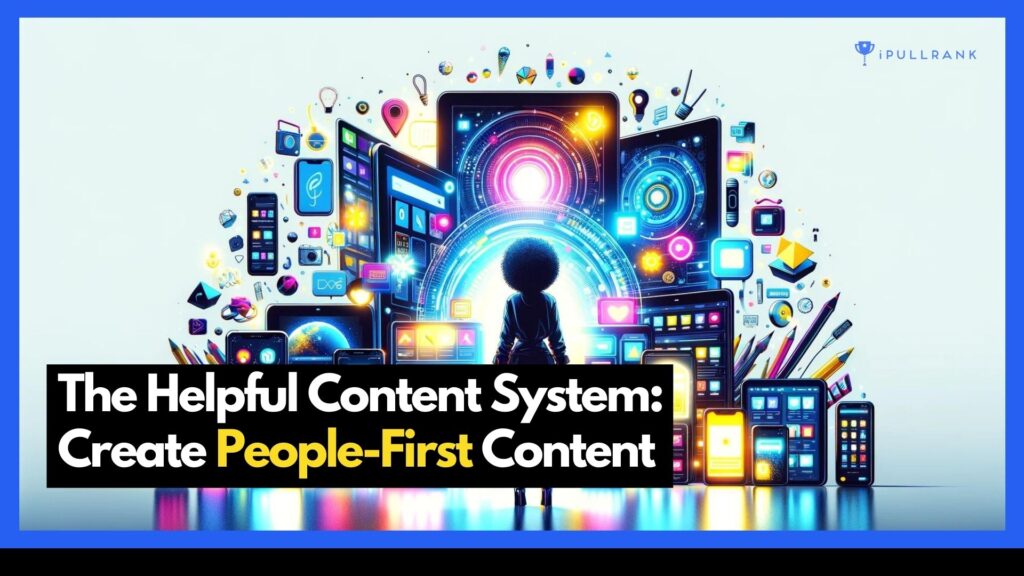SEOs know all of the ‘tricks’.
‘Make sure each of these posts has our core keywords in the title, first fifty words, and subheads; each post should be (at least) 1,600 words, and it should cover each of the keywords in our niche.’
Does this sound familiar?
Guess what? Google knows the difference between filler content (that technically answers a searcher’s question but leaves them feeling unsatisfied) and valuable content that scratches a searcher’s itch.
The Google algorithms know the difference between content that’s written for searchers and content written for the search engine. Or at least much of the Google documentation implies they do.
So should AI content (Natural Language Generation) be used to create a massive amount of content to drive organic traffic to your website?
It depends on how you use it.
The Helpful Content System That Might Reshape Google’s Core
On August 18th, Google officially announced its Helpful Content Update. It’s since been renamed as the Helpful Content System.
Today, we’ll take a closer look at this system; we’ll examine the changes they’ve announced, outlining how this affects you.
I’ll also provide you with a helpful checklist you can use to evaluate your content and offer actionable tips from several industry heavyweights.
Want the full video breakdown?
Here’s iPullRank’s demand generation manager, Garrett Sussman on The SEO Weekly with his week one Helpful Content Update take:
What is Google’s Helpful Content System?
On August 25th, 2022, Google officially began rolling out its Helpful Content Update over the course of 2 weeks with a September 8th completion.
This is an ongoing, automated, sitewide ranking signal that aims to separate content that’s objectively helpful to searchers vs. content designed to appeal to search engines and rank highly.
According to Google, “the helpful content update aims to better reward content where visitors feel they’ve had a satisfying experience, while content that doesn’t meet a visitor’s expectations won’t perform as well.”
Meaning what exactly?
Well, Google wants to reward content that doesn’t try to game the system.
When someone searches for ways to fix the ice dispenser for their refrigerator, the best movie in 1986 (it was Stand By Me, not Top Gun) or an opinion piece on Quiet Quitting, they want real content that either has practical use cases, expert input, or journalistic research.

Not gobbledygook from raw AI output that has X words and H2s with the keyword X times. Not from a poor writer who has never even seen Stand By Me.
How do you do this?
“By following our long-standing advice and guidelines to create content for people, not for search engines. People-first content creators focus first on creating satisfying content, while also utilizing SEO best practices to bring searchers additional value.”
Well, how do you know you’re on the right track?
You’re doing great if you can answer ‘Yes’ to each of the questions below.
- Do you have a target audience for your business or site? Would they view your content as useful if they came to you?
- Do you demonstrate first-hand expertise and a depth of knowledge (e.g., expertise from using a product or service)?
- Does your site have a primary purpose or focus (e.g., inbound marketing, architecture, life insurance, etc.)?
- Do searchers leave your site feeling they’ve learned enough about a topic to help achieve a specific goal?
- Will your readers leave your site feeling they’ve had a satisfying experience?
- Do you rely on Google’s guidance for core updates and product reviews?
Google makes its position explicit in case it’s not abundantly clear.
“Avoid creating content for search engines first. Content created primarily for search engine traffic is strongly correlated with content that searchers find unsatisfying.”
What exactly is ‘helpful content’ then?
Google describes helpful content as content that:
- Created for a specific audience or reader segment
- Answers the specific questions of that audience or reader segment
- As the required experience, expertise, authoritativeness, credibility, and trustworthiness (E-E-A-T) to be useful to searchers
- Meets the expectations (wants and needs) of the reader
So how should we approach this on our end? Wil Reynolds, Founder at Seer Interactive, summarized this beautifully. “My mantra, I’d rather be thanked than ranked.”
This makes sense.
If you’re making the right choices, you’re creating content that’s a fit for your audience or customer segments. Most people win the battle (better rankings, visibility, and more traffic) but lose the war (fewer clicks and conversions, higher ad costs, decreased ROAS).
This is a problem.
We have this bad habit of trying to please (manipulate) Google first so we can improve our rankings and visibility. What are the warning signs of a search engine first approach? If your answer to any of these questions is ‘Yes,’ there’s a good chance you’re operating with a ‘search engine first’ approach.
- Is your content created for people or to earn rankings and lure people from search engines?
- Are you creating lots of content or covering various topics to improve your visibility or rankings in Google’s search results?
- Do you rely on AI content or automation services to create content across various topics?
- Are you mainly summarizing what others have to say without adding much value?
- Are you newsjacking (writing about trending topics you otherwise wouldn’t cover) in hopes of capturing additional traffic from breakout topics?
- Do readers leave your site in search of better information from other sources?
- Do you stick to a particular word count (i.e., 1,500 words) because someone told you that Google prefers word counts over _____ words? (They don’t).
- Are you covering a topic or niche to get search traffic, even though you don’t have any real expertise, authority, or trustworthiness in that domain?
- Is your content clickbait? Does it fail to deliver on its promise to readers? (e.g., answers a question that has no answer, a product, movie, or TV show release date when one hasn’t been announced)?
If you answered ‘Yes’ to most of these questions, you probably have a ‘search engine first’ approach.
What ‘Search Engine First’ publishers should expect
‘Search Engine First’ publishers should expect a decrease in rankings, visibility, and search engine traffic. Google explains its reasons for punishing these sites:
“This update introduces a new site-wide signal that we consider among many other signals for ranking web pages. Our systems automatically identify content that seems to have little value, low-added value or is otherwise not particularly helpful to those doing searches.
Any content — not just unhelpful content — on sites determined to have relatively high amounts of unhelpful content overall is less likely to perform well in Search, assuming there is other content elsewhere from the web that’s better to display. For this reason, removing unhelpful content could help the rankings of your other content.
This classifier process is entirely automated, using a machine-learning model. It is not a manual action nor a spam action. Instead, it’s just a new signal and one of many signals Google evaluates to rank content.”
This shouldn’t be a surprise for experienced SEOs, though. For years, Google has been telling us repeatedly via Panda, Core Updates, and changes like E-E-A-T that they want site owners to take a people-first approach.
Who will be affected negatively by this helpful content update? Reynolds actually spoke with Google’s search team about this update.
“My bet, publishers should watch out. I’m betting these are the folks that get hit the hardest:
- Publishers focused on a very broad range of topics (CNET, Forbes, etc.)
- Sites that exist to collect and monetize organic search traffic without providing unique value
- Sites that leverage content created with tools like Jasper or Copymatic”
This makes sense when you realize big publishers like CNET create shallow content pieces that are consistently outside their wheelhouse (e.g., CNET, a tech publisher, opining on Donald Trump). Publishers have done this to capture more search referrals/traffic; it’s been effective though it’s been a case of diminishing returns.
The Helpful Content Update changes that.
Google’s latest update means the benefits of spray-and-pray content have come to an end. With this update, Google has drawn a line in the sand. They expect your content to produce value (E-A-T) for searchers; they’ll reward those who meet their standards and penalize those who don’t.
Noncompliance is a disaster in the making.
That’s because Google plans on removing low-quality content offenders.
“A natural question some will have is how long will it take for a site to do better, if it removes unhelpful content? Sites identified by this update may find the signal applied to them over a period of months. Our classifier for this update runs continuously, allowing it to monitor newly-launched sites and existing ones. As it determines that the unhelpful content has not returned in the long term, the classification will no longer apply.
This classifier process is entirely automated, using a machine-learning model. It is not a manual action nor a spam action. Instead, it’s just a new signal and one of many signals Google evaluates to rank content.”
There’s no bargaining out of this one.
Low-quality sites may see significant decreases over time – if your content is viewed as poor, you’ll need to make substantial changes to recover. The days of search engine first content are now over.
How to Optimize for Google’s Helpful Content System
If you’re a ‘people-first’ publisher, you’ll find that you’re largely unaffected by the Helpful Content System. Experienced SEOs have been preaching a people-first approach for years.
Way back in 2020, Mike King, iPullRank Founder, posted his provocative video, Why SEO Content is Not a Thing.
“For so many years it was all about shoving a keyword into a page 50 times. And as long as you did that more times than another page, you are number one for that keyword.
Panda was the algorithm that basically looked for content and determine whether or not that content actually had utility for users.
They use user signals, they use a variety of different data points to determine that. And ultimately it made it difficult to rank well for content that was written with the same word over and over and clearly just wasn’t valuable to a user.
And so what you should be doing isn’t thinking about that. You should be thinking about:
- Okay, what is it that my brand wants to say?
- What is it that people want to know?
- And then what is it that search engines expect?
And what I mean by that is you can look at the SERP and see what type of content is being considered valuable by these algorithms and then make a better version of that.”
King stated that all content must:
- Speak to a target audience
- Fit in the channel it is for
- Meet a need/state
- Have utility
- Be well designed
See his note at the bottom?
“Organic search is an entry point fueled by content, but you must create for people first!”
Bam.
Not only that, Mike has put together a content pruning workbook that you can use to assess your existing content as you improve its helpfulness.

He’s been preaching this for more than two years. A quick look at feedback from experienced SEOs, and we see the same message.
What does the VP of SEO at Apartments.com, Zach Chahalis have to say about the update?
“The Google Helpful Content System has the potential to cause the greatest impact on organic SERPs since Panda.
While the initial volatility looks to be relatively flat, this update will likely have long-running and deep implications for SEOs and website owners after it is fully rolled out. This will also be a very impactful signal for sites where the majority of the content is not considered to be valuable. With this update resulting in a sitewide signal, a few good pieces of content won’t offset a large amount of lower-quality content.
I highly recommend that SEOs and webmasters continue to keep a close eye on their organic rankings as this update continues to roll out. I would also recommend that SEOs and webmasters do not just indiscriminately delete content from their sites as this can end up causing more harm than good.
If you’re struggling with how to evaluate the value of your content, the team at iPullRank can help guide you with a tailored content audit. Contact us.“
The mantra is the same.
Put people first. Create content for people first. Be targeted, be helpful, or you’ll be gone.
This really shouldn’t be a surprise.
Google has been moving us in this direction since Panda 11 years ago. Panda, Fred, E-A-T, MUM, and now, the Helpful Content update; we finally see the writing on the wall. We’re witnessing the end of ‘search engine first content.’
Google’s Helpful System is a game-changer
Search used to be simple.
Stuff a keyword into a page 50 times. Do that more than another page (or competitor), and you’re suddenly number one for that query.
Those days are over.
Google knows the difference between low-value filler content written for search engines and valuable content that meets a need and scratches a searcher’s itch.
They’re filtering search engine first content, sites that cater to search engines first and people second, out of their search results. This update is about rewarding sites that provide visitors with a satisfying experience; content that fails to meet a visitor’s expectations won’t perform as well.
A people-first approach is effective right now; it’ll be effective over the long term. Build your content strategy around people first, and you’ll find the Helpful Content update leads to increased rankings and consistent traffic.
Need EXPERT HELP with an industry-leading SEO and CONTENT STRATEGY? CONTACT US!
Have you been hit by the Helpful Content Update? How are you working to create great content with E-E-A-T? Sound off in the comments below!
Next Steps
Here are 3 ways iPullRank can help you combine SEO and content to earn visibility for your business and drive revenue:
- Schedule a 30-Minute Strategy Session: Share your biggest SEO and content challenges so we can put together a custom discovery deck after looking through your digital presence. No one-size-fits-all solutions, only tailored advice to grow your business. Schedule your session now.
- Mitigate SGE’s Potential Impact: How prepared is your SEO strategy for Google’s Search Generative Experience? Get ahead of potential threats and ensure your site remains competitive with our comprehensive SGE Threat Report. Get your report.
- Enhance Your Content Relevancy with Orbitwise: Not sure if your content is mathematically relevant? Use Orbitwise to test and improve your content’s relevancy, ensuring it ranks for your targeted keywords. Test your content today.
Want more? Visit our Resources Page for access to past webinars, exclusive guides, and insightful blogs crafted by our team of experts. Everything you need to keep your business ahead of the curve is right at your fingertips.
Take the next step with iPullRank.








